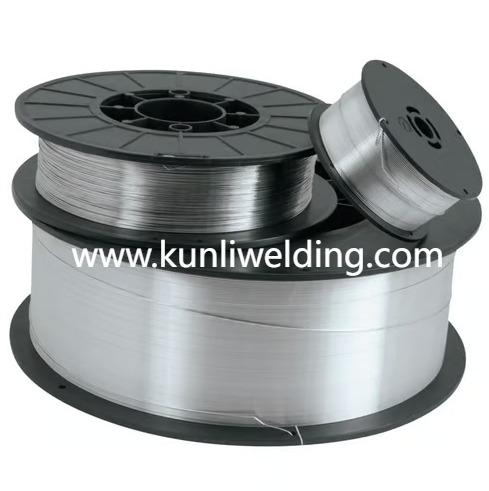Practical routine changes that bring down porosity rates in busy workshops

When production schedules tighten and cosmetic defects become visible, Aluminum Mig Wire Manufacturers are often asked to explain how supply chain practice and handling influence porosity in finished welds. Porosity in aluminum welds starts at the moment the molten puddle forms and trapped gas cannot escape, so what arrives on your spool and how it is treated on the bench matters.
Porosity is usually caused by hydrogen that comes from moisture or contaminants on the base metal or the filler. That gas dissolves in the molten aluminum and then forms voids as the weld solidifies. Keeping surfaces clean and preventing moisture from reaching the arc reduces the amount of hydrogen available to enter the puddle. Practical cleaning routines and proper handling of spools before use shrink the chance that weld deposits will contain pinholes.
Shielding gas quality and coverage play a central role in preventing atmospheric contamination of the weld pool. Use inert gas with controlled dew point and make sure the gas flow is steady and free of leaks to avoid turbulence that can draw air into the pool. In open workshop conditions, local air movement can disturb the gas envelope around the arc, so setting up wind breaks or changing the welding orientation can improve coverage and reduce the risk of trapped gas.
Wire feed system integrity affects arc stability and puddle behavior. Bent liners improper spool tension or worn drive rolls cause intermittent feeding and erratic arc conditions. That instability can produce a violent puddle that traps gas before it can escape. Regular maintenance checks for liner wear proper spool mounting and correct feed roll profiles help keep deposition smooth and predictable. When changeover is required choose spool formats and liners that match your feeders to avoid feeding anomalies during production runs.
Material provenance matters because alloy composition and impurity levels affect how the weld pool behaves at liquid temperatures. Fillers designed for structural or marine applications respond differently to heat and can change the likelihood of porosity if their chemistry varies unexpectedly between batches. Asking suppliers about batch traceability packaging practices and incoming inspection procedures gives you actionable information to compare reels and qualify material before it reaches the critical assembly stage.
Practical shop floor routines reduce porosity without dramatic investment. Start by baking opened reels when storage conditions are suspect and keep sealed spools in moisture barrier packaging until use. Wipe joint areas with compatible cleaners and use non corrosive solvents to remove oils and residues from surfaces. Strike test beads on representative scrap to verify settings and gas coverage before tackling critical joints. When a defect shows up isolate a single variable at a time so you can link corrective actions to observed changes in bead appearance.
Procedure choices matter too. Maintain a shorter arc length and controlled travel speed to allow dissolved gas time to escape from the molten pool prior to freeze. In some cases using pulsed power or adjusting transfer mode can produce a more stable puddle and gentler metal transfer that reduces turbulence. If you weld thin sections practice heat input control so the joint does not overheat which can exacerbate hydrogen absorption and worsen porosity.
When emerging projects push fabrication toward lighter assemblies and more demanding environments welders must balance speed against quality. Sourcing wire from manufacturers who publish production details and who support trial runs helps you tune parameters and reduce qualification cycles. Open communication about lot identification and packaging standards allows procurement and production to coordinate drying procedures and handling protocols before the first assembly weld.
If porosity persists after checks on cleaning gas and feeder systems then look at less obvious sources such as contaminated filler spools poor spool storage or hidden residues inside fixtures. Running root passes with slightly adjusted travel angle and maintaining a steady push technique when appropriate can help the gas escape more easily. Recording the corrective step that worked means the team gains a reproducible defense against the same defect showing up later.
Welding teams who combine preventive practice with supplier transparency reduce rework and preserve schedule momentum. When you qualify aluminum welding filler ask about how reels are packaged whether desiccants are used and what verification tests accompany shipments. Trial reels and documented handling guidance permit fast validation and let your technicians focus on consistent bead formation rather than firefighting defects at the end of the line. For details about aluminum filler options and manufacturing practices see the aluminum alloy welding wire product listing at this address https://www.kunliwelding.com/product/aluminum-alloy-wire/aluminum-alloy-welding-wire.html .
- Art
- Causes
- Crafts
- Dance
- Drinks
- Film
- Fitness
- Food
- Игры
- Gardening
- Health
- Главная
- Literature
- Music
- Networking
- Другое
- Party
- Religion
- Shopping
- Sports
- Theater
- Wellness


